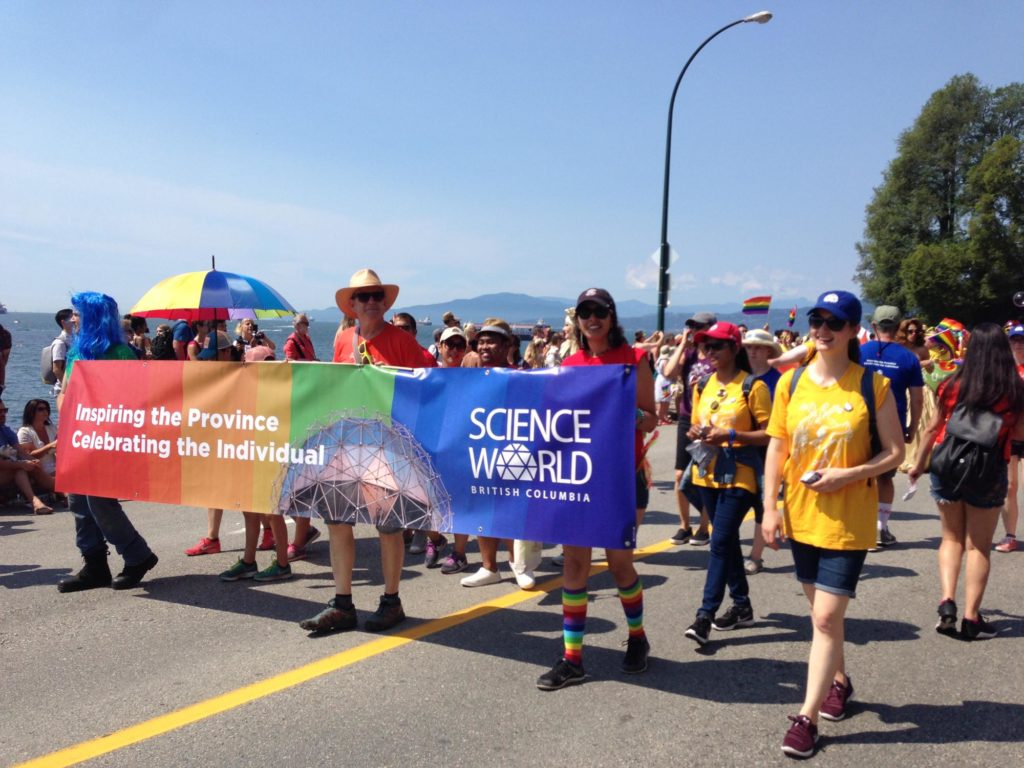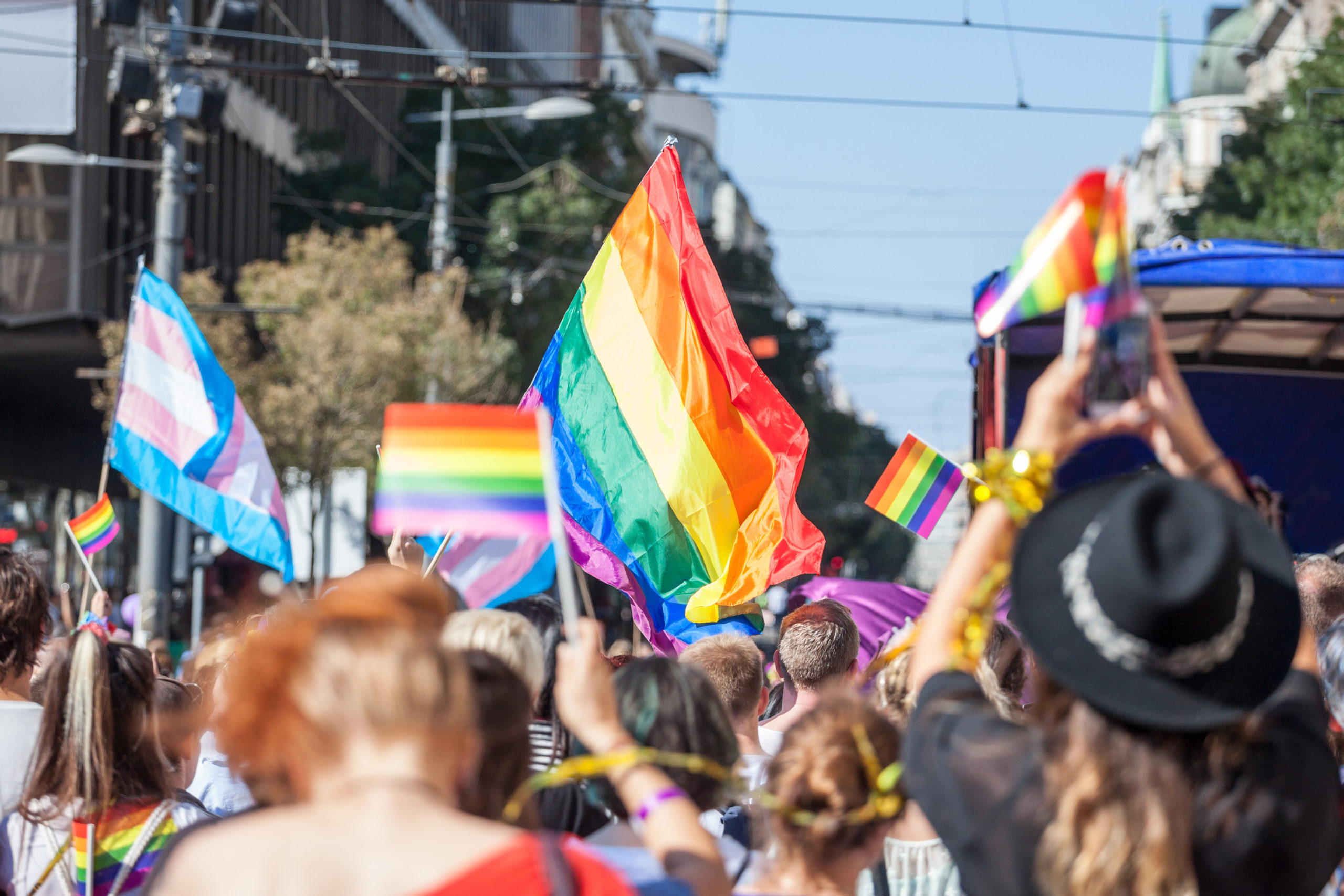June 28, 2020 marked 51 years since the Stonewall riots began. On that fateful early morning, police raided the Stonewall Inn, a gay bar, on Christopher Street in New York’s Greenwich Village. The vice squad planned to shut the Stonewall down for good. But, fed up with ongoing harassment, the patrons resisted by throwing anything they could find while confronting police on the street.
After news spread about the resistance, 2,000 protestors showed up the following night. The riots continued for six nights with 21 people arrested, and many protestors and police injured.
Stonewall signalled the beginning of the gay rights movement. On June 28, 1970, LGBTQ2S+ activists held the first annual Christopher Street Gay Liberation Day march, which evolved into the Pride parade.
Still Fighting Discrimination
Fifty-one years later, it’s hard to imagine that gay people were so blatantly discriminated against on the basis of sexual orientation. For example, in 1969, New York state laws prohibited serving alcoholic beverages to gay people. While many gains have been made when it comes to LGBTQ2S+ rights, there’s still a ways to go.
In Canada, Bill C-150 was passed in 1969, which partially decriminalized some same-sex practices. In 1996, sexual orientation, and in 2005, same-sex marriage, were respectively added to the Canadian Human Rights Act. Gender identity was added in 2017.
But gains can be lost, as evidenced by the ban on transgender troops in the US military. In March 2019, the Canadian Armed Forces announced new policies designed to welcome transgender troops, end discrimination, and foster inclusion and respect in Canada’s military. Creating non-discriminatory policies is a start, but hearts and minds must also be changed so that discriminatory attitudes from 51 years ago are no longer tolerated—anywhere.
Still Fighting Discrimination in Science
Science isn’t always an inclusionary field for LGBTQ2S+ students and scientists. A US study found that LBFTQ2S+ students are more likely to drop out of STEAM studies at a university level than heterosexual students. And a 2019 UK study found that almost a third of LGBTQ2S+ physical scientists have considered quitting their jobs due to harassment, bullying or exclusionary behaviour by their colleagues.

Science World is proud to celebrate Pride Month. As an inclusive place to work, we value diversity because it leads to better and happier employees. Diverse teams are better teams; they provide a wider range of perspectives that help improve performance. Diverse teams can create solutions that are more inclusive and benefit more people.
A diverse and inclusive world means we all benefit from everyone’s creativity and input. Today, and every day, we stand with all LGBTQ2S+ people.
The riots at Stonewall and the resulting Pride parades embody a fighting spirit that strives to increase understanding, respect, inclusivity and love, no matter what gender a person identifies with.
So, we wondered, is there any scientific evidence that love is good for us? We scoured the scientific research and found that human interactions such as hugging, kissing and sex can help fight stress, germs, head colds and pain—while making our world a more loving place.
Science shows how love is good for us
1. Hugging reduces stress
According to researchers at Penn Medicine at the University of Pennsylvania, when we hug, the hypothalamus produces oxytocin, the “feel-good” hormone. It’s released by our pituitary gland when we’re physically affectionate, resulting in that warm, fuzzy feeling. We only experience this effect when we care about the person we touch.
Being affectionate also reduces the secretion of the stress hormone, cortisol. A high cortisol level has been linked to various mental and physical conditions, including depression. When a warm hug reduces our cortisol level, we feel calmer and less stressed.
2. Kissing boosts the immune system
According to Dutch researchers, a 10-second kiss can transfer up to 80 million bacteria between partners. Our mouths contain more than 700 kinds of bacteria! Not exactly what you want to be thinking about when you’re locking lips with someone you love.
A small study of 21 couples, who filled out questionnaires and then had swab samples taken, revealed that partners who kiss intimately on a regular basis have similar microbiota. In fact, the more the couple kiss, the more similar their microbiota become. This exchange of microbiota can be a pleasant way to boost your immune system.
3. Sex relieves a head cold
According to the Cleveland Clinic, sex can provide temporary relief from nasal congestion for up to an hour. And it’s effective for men and women. Soft nasal tissues, called turbinates, contain a lot of blood vessels. These can swell and block nasal passages when we have a head cold.
But during sex, our sympathetic nervous system increases our adrenaline levels and our blood vessels constrict. With reduced blood flow to the nose, inflammation is reduced and it’s easier to breathe. But beware, your congestion may be relieved but your nose may start to run instead!
4. Orgasms reduce pain
According to researchers at Rutgers University, we register pleasure and pain in the same areas of the brain. During orgasm, researchers found that the brain focuses more on pleasure than on pain, allowing us to withstand more pain than usual.
An orgasm can relieve a variety of pain, including post-operative, whiplash, arthritis, migraine and even labour pain. The only drawback is that pain relief only lasts about eight to 10 minutes. (The researchers claim they never have a problem finding volunteers for their studies.)
Happy Pride from Science World!
Share the science—and the love—hug your partner today.
